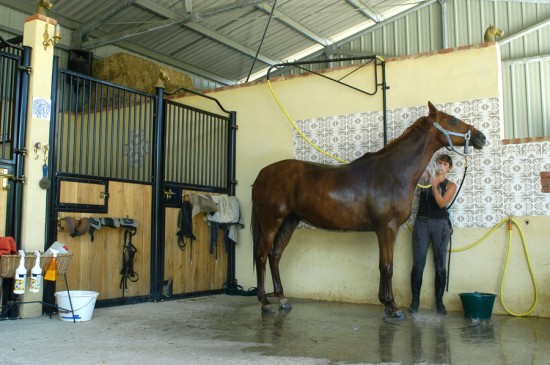One of the most ignored, but vital choices you will typically make concerns where to build your chicken sheds. Choosing the wrong spot can cause sickness among the flock, decreased egg production, filthy and unsightly eggs, and additional damaging consequences.
Error #1: Not Choosing a Site Location with Good Drainage
Certainly the one specific aspect that is capable of taking all the fun out of keeping poultry is placing your chicken sheds in areas with deficient water drainage. This can result in water buildup, sludge, damp litter, filthy eggs, health disorders, and fewer eggs produced.
If the water cannot drain properly it will result in muddy areas. When chicken droppings are added to the mixture of water and soil, it can create a contaminated sludge. This can easily be tracked into the poultry coop where the food, water, poultry nests, and litter are found, which can cause the litter to get damp and the eggs and poultry nests to get filthy. Hens must have an unpolluted house to stay healthy and lay large numbers of organic eggs.
Error #2: Creating Poultry Sheds that are Facing the Wrong Direction
When creating a chicken house it should most often be facing south if at all possible. This is mandatory in climates where the wintry months are harsh. South facing houses will be the recipient of the greatest sun exposure which will provide some essential purposes. It will normally keep the chicken sheds a bit warmer throughout the wintry weather which will normally help the interior stay drier. And bear in mind, dry chicken sheds will result in extra eggs and less diseases.
Error #3: Not Picking an Area that will supply Superior Air Flow
High-quality air flow, in addition to correctly placed windows, will make it possible for fresh air currents to flow through the poultry house. This will usually keep strong smells from increasing to noxious levels and help maintain litter dryness.
Additionally, be aware of which direction the wind normally blows where you live. Chicken sheds will ideally not be located where there are no natural breaks. If strong winds are a risk establish the chicken coop in a place with a natural wind break.
Error #4: Not Positioning Poultry Sheds In Close Proximity to Water and Electricity
Electrical and water supplies are a couple of factors that are not typically given any thought before construction. In spite of this, constructing your coop in the vicinity of these sources will usually save you a great deal work and help you get more eggs from your birds.
Being in the vicinity of a water faucet will make it simple to add a simple automated watering system, eliminating the need to change or refill the water fountains each day. Electricity will permit you to install a light bulb in the interior of the chicken coop if necessary. Hens need a bare minimum of 14 hours of light each day if you want them to lay eggs reliably. Throughout the seasons of the year when there are fewer than 14 hours of light you can put extra light in the hen house which will normally keep the pullets producing on a regular basis even during the winter. Just one low-wattage bulb will generally keep the pullets producing faithfully.
Error #5: Not Thinking About Future Expansion
It is best to keep your choices open. You may perhaps think that you will never keep more than a handful of hens, but who knows what the future holds? Even if you are not planning on increasing the amount of hens you keep, it is generally a good idea to give yourself plenty of room to do so if you change your mind.
You may perhaps believe that a couple of hens is enough and build your chicken coop in an area where there is no additional space for expanding in the future. However, if you should ever have a change of heart and decide to keep a dozen pullets you will appreciate the extra room.

 Different Medication Options For Dogs That Suffer From Seizures
Different Medicat
Different Medication Options For Dogs That Suffer From Seizures
Different Medicat
 Why I Make Dog Food
He was the skinniest puppy I had ever seen. The shelter
Why I Make Dog Food
He was the skinniest puppy I had ever seen. The shelter
 A Glance At The Benefits Of Raw Pet Food
A Glance At The Benefits Of Raw Pet Food
Raw P
A Glance At The Benefits Of Raw Pet Food
A Glance At The Benefits Of Raw Pet Food
Raw P
 What To Expect When You Adopt An Older Rescue Dog
What To Expect Wh
What To Expect When You Adopt An Older Rescue Dog
What To Expect Wh
 Horse Care - Stable And Grooming Equipment
Horse Care - Stab
Horse Care - Stable And Grooming Equipment
Horse Care - Stab